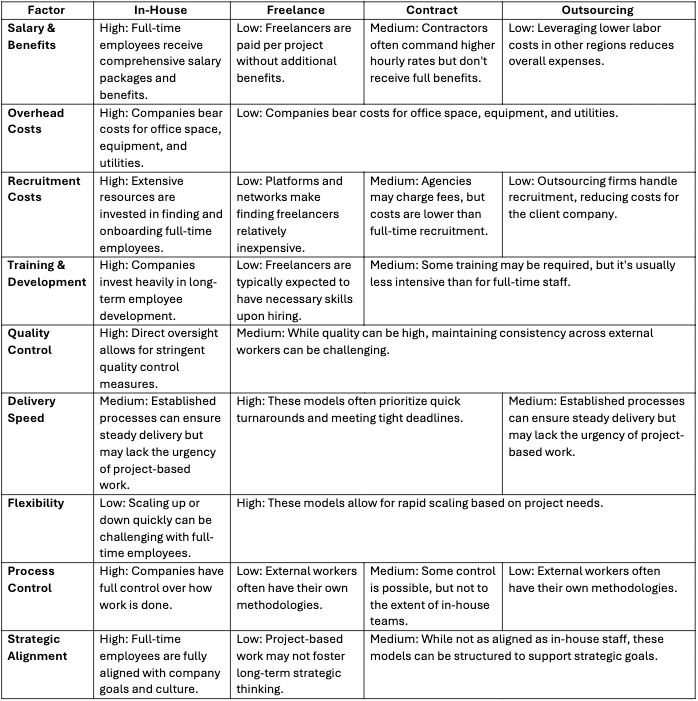








In today’s rapidly evolving tech landscape, choosing the right staffing model can make a company’s success or reduce it competitiveness. As we go through the complexities of 2024’s job market, it’s crucial for tech leaders to understand the costs and benefits associated with various staffing approaches. This article delves into the cost-benefit analysis of different staffing models in the tech industry, focusing on in-house, freelance, contract, and outsourcing options.
Before we dive into the specifics of each staffing model, it’s worth emphasizing the significance of conducting a thorough cost-benefit analysis. In an industry where talent acquisition and retention can be as challenging as developing cutting-edge technologies, making informed decisions about your workforce can significantly impact your foundation and overall success.
The in-house staffing model remains a popular choice for many tech companies, especially those looking to build a strong, cohesive team aligned with their long-term vision.
Pros:
Cons:
Wonder how to choose the most suitable partner? This article will help you: How to select a trusted software development partner for your businesses – Ultimate Guide 2024
The gig economy has transformed how tech companies access talent, with freelancing becoming increasingly popular.
Pros:
Cons:
👉 Suitable Engagement Model for Companies
Contract staffing offers a middle ground between full-time employees and freelancers.
Pros:
Cons:
Outsourcing has been a game-changer for many tech companies, offering access to global talent pools.
Pros:
Cons:
Too many models to choose? Have a look: Choosing Between Onshore, Nearshore, and Offshore: A Decision Guide 2024
To truly understand the impact of different Staffing Models, let’s examine a comparative cost-benefit analysis:

This table provides a snapshot of how different factors stack up across staffing models. However, it’s important to note that the actual costs and benefits can vary significantly based on your specific company needs, industry niche, and geographic location.
*Real-World Examples
To put these models into context, let’s look at some real-world applications:
As we’ve explored, each staffing model comes with its own set of advantages and challenges. The key to success lies in aligning your staffing strategy with your company’s goals, culture, and financial realities.
Ready to optimize your tech workforce? Don’t let outdated staffing models hold you back. Take the first step towards a more efficient, flexible, and cost-effective team by conducting a thorough cost-benefit analysis of your current staffing approach and look for an IT Consulting partner that can help with your request. Your future self (and your strong foundation) will thank you!
Stay ahead in a rapidly changing world with our monthly look at the critical challenges confronting businesses on a global scale, sent straight to your inbox.